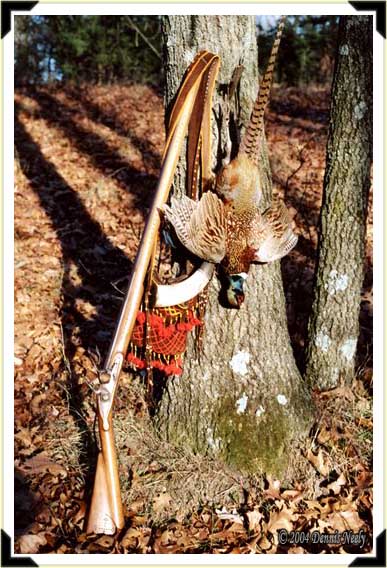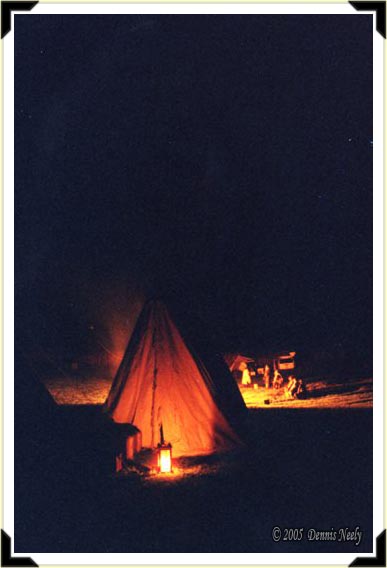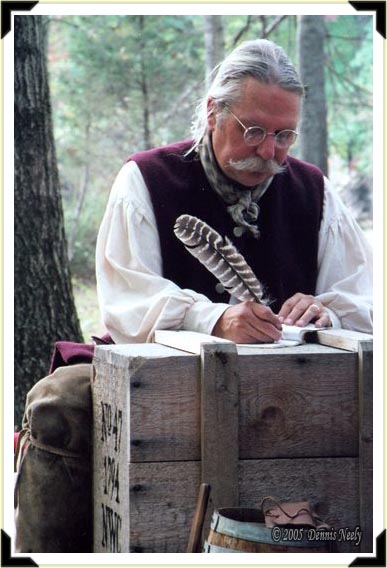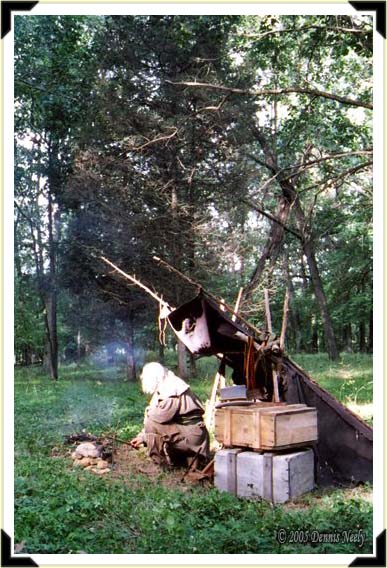-
Recent Posts
Categories
Archives
- November 2020
- October 2020
- September 2020
- August 2020
- July 2020
- June 2020
- May 2020
- April 2020
- April 2019
- March 2019
- February 2019
- January 2019
- December 2018
- November 2018
- October 2018
- September 2018
- August 2018
- July 2018
- June 2018
- May 2018
- April 2018
- March 2018
- February 2018
- January 2018
- December 2017
- November 2017
- October 2017
- September 2017
- August 2017
- July 2017
- June 2017
- May 2017
- April 2017
- March 2017
- February 2017
- January 2017
- December 2016
- November 2016
- October 2016
- September 2016
- August 2016
- July 2016
- June 2016
- May 2016
- April 2016
- March 2016
- February 2016
- January 2016
- December 2015
- November 2015
- October 2015
- September 2015
- August 2015
- July 2015
- June 2015
- May 2015
- April 2015
- March 2015
- February 2015
- January 2015
- December 2014
- November 2014
- October 2014
- September 2014
- August 2014
- July 2014
- June 2014
- May 2014
- April 2014
- March 2014
- February 2014
- January 2014
- December 2013
- November 2013
- October 2013
- September 2013
- August 2013
- July 2013
- June 2013
- May 2013
- April 2013
- March 2013
- February 2013
- January 2013
- December 2012
- November 2012
- October 2012
- September 2012
- August 2012
- July 2012
Blogroll
Forums
General Living History
Historical Sites
Organizations
Artists

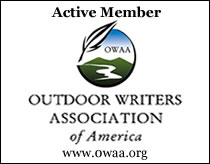
“Late Afternoon Rooster”
Posted in Pheasant Hunts, Snapshot Saturday
Tagged Black powder hunting, Dennis Neely, historical trekking, Mountain Man, North West trade gun, Northwest trade gun, trade gun, traditional black powder, traditional black powder hunting, traditional blackpowder, traditional blackpowder hunting, Traditional Woodsman
Comments Off on “Late Afternoon Rooster”
“Frolic in the Valley”
“Snapshot Saturday”
Posted in Deer Hunts, Hunting Camps, Snapshot Saturday
Tagged Black powder hunting, Dennis Neely, historical trekking, Mountain Man, North West trade gun, Northwest trade gun, trade gun, traditional black powder, traditional black powder hunting, traditional blackpowder, traditional blackpowder hunting, Traditional camping, Traditional Woodsman
Comments Off on “Frolic in the Valley”
The Still-Hunt Back
“West, maybe a tad southwest,” a wilderness tenant whispered to his hunting companion. To the east, a hunt-battered Northwest gun leaned against a lichen encrusted jack pine. The smoothbore’s butt rested on the damp leaves and pressed against the woodsman’s right leather moccasin.
 The compass’ needle still quaked some, but the reading appeared true. An index finger folded the sundial’s vane down. The lid covered the instrument with a slight twist. Nimble fingers slid the tarnished-brass compass into the open-top, buckskin shot pouch. With the trade gun’s prime checked and the muzzle pointed due west, the returned captive’s moccasins still-hunted into the dense undergrowth of an 18th-century time capsule.
The compass’ needle still quaked some, but the reading appeared true. An index finger folded the sundial’s vane down. The lid covered the instrument with a slight twist. Nimble fingers slid the tarnished-brass compass into the open-top, buckskin shot pouch. With the trade gun’s prime checked and the muzzle pointed due west, the returned captive’s moccasins still-hunted into the dense undergrowth of an 18th-century time capsule.
A tall white pine, standing straight-on a hundred or so paces distant, served as a bearing point. The air smelled of hemlock and musty mold. The canopy overhead dimmed the daylight. Slippery holes, exposed roots and layers of dead branches accentuated the erratic, zig-zag course that hoped to flush a confused partridge.
At a pause, creamy-white, buckshot-sized mushrooms, sitting atop dainty stems in a small hollow near the roots of a maple, garnered the woodsman’s curious attention. A few footfalls to the north, yellow fungi speckled the forest floor. Thirty-five paces north, a fort hunter decked in strange garb studied orange and red mushrooms. He commented on their brilliant colors in the subdued light.
Twenty minutes later, a rotting white pine stump, twenty-some feet tall and riddled with woodpecker holes, hosted a parlay of sorts. The two veteran hunters discussed the lack of squirrel sightings, the absence of rabbit leavings and/or the creatures themselves. The reason for not putting up a single partridge seemed obvious—the poor quality of the site’s habitat.
The two woodsmen trudged a ways to the north, then paused again with compasses in hand. A needle-width north of due east seemed to be the best course as they separated and began the still-hunt back to the wagon trail…
An 18th-Century Compass
I find it somewhat unbelievable that the Michigan Outdoor Writers Association Summer Conference is over. MOWA members meet twice a year—winter and summer. The organization includes some of the best outdoor communicators in the country who strive to maintain the high standards set by their many predecessors.
This year’s summer gathering was hosted by the fine businesses of the Lake Gogebic area in the far western end of Michigan’s Upper Peninsula. The September date was chosen so hunters and dog handlers could partake of the outstanding grouse and bear hunting that end of the UP offers. The fishermen in the group took to Lake Gogebic, hoping to hook a walleye or limit out on panfish. A local sports shop sponsored ATV trail rides, and the waterfalls and natural scenic beauty of the region kept hikers busy.
Such events act as placeholders in the midst of a busy year. Anticipation grows as the conference dates approach, to say nothing of the chatter in cyberspace. The “summer rendezvous,” as many MOWA members call it, kicked off on the opening day of Michigan’s small game season.
 Noted outdoor writer and radio host Tom Lounsbury wanted to hunt grouse with his Thompson-Center New Englander 12-guage percussion shotgun. Tom swears by this gun, and he prefers it for hunting ring-necked pheasants. I’ve tried to convert him to a Northwest trade gun or a French fusil de chasse, complete with linen and leather hunting togs, but to no avail—so far.
Noted outdoor writer and radio host Tom Lounsbury wanted to hunt grouse with his Thompson-Center New Englander 12-guage percussion shotgun. Tom swears by this gun, and he prefers it for hunting ring-necked pheasants. I’ve tried to convert him to a Northwest trade gun or a French fusil de chasse, complete with linen and leather hunting togs, but to no avail—so far.
In the days leading up to the gathering, Tom extended the invite to other MOWA members to join us on a “muzzleloading grouse hunt.” Not sure of who might take us up on the offer, we packed a couple of “loaner” black powder smoothbores. I took along a 20-guage fusil de chasse and a reproduction, 12-guage percussion double barrel.
The first day Tom and I hunted alone in an area suggested by the owners of a local bait shop. As it turned out, Tom Pink, a popular free-lance writer who pens a column for Michigan Outdoor News, wanted to try a black powder grouse hunt so he hunted with us on Saturday, using the double-barreled 12-gauge percussion shotgun, but that is another story…
The vast majority of my traditional black powder hunting stories take place on the same plot of ground, my beloved North-Forty. That limits me to the game, or lack of game, available in any given season or year. But from time to time, I travel to other locales and sample the hunting on public land. When I do, I make it a point to carry a brass compass that I have owned for thirty years.
This compass found its way into the hunting bag carried by my trading post hunter persona in the late 1980s, when I started turkey hunting in Michigan’s Alcona County. A number of those early pursuits centered on the dense woods of the Huron National Forest. In preparation for the first sojourn, I called the Michigan Department of Natural Resources field office for that county. The attending officer suggested areas to try, which I marked on my county map. He finished his recommendations with, “Be sure to bring your compass.”
Not being familiar with hunting on a plot of ground that didn’t have fences, I never gave a compass a thought. The only vendor that I knew of that sold a compass was James Townsend & Son in Pierceton, Indiana. I had seen them among his goods displayed for sale in the “sheep sheds” at Friendship the September before, so I called their store.
Mr. Townsend answered my questions regarding authenticity—the brass compass was not an exact copy, but close to an original that dated from the French and Indian War era, which predated my 1790s post hunter persona. The price was fair, and the compass arrived in the mail a few days later, in plenty of time for my grand turkey hunting adventure.
My compass skills are rudimentary at best: the instrument held flat in the hand, the magnetic north pointer set to north on the dial, then note the direction of travel out and reverse it coming back. I’m sure that description will make experienced hikers and mountaineers cringe, but it works for me, at least so far.
Along with noting a bearing direction, I also pay close attention to landmarks such as distinctive trees, ground formations and the like. The first time on a parcel is always a new experience, but by the third or fourth outing a woodsman gains a sense of familiarity.
John Tanner makes no mention of a compass in his narrative. I haven’t checked my note tabs for all of the journals I reference, but I don’t believe any of my hunter heroes mention using a compass. Tanner grew up hunting with the Ojibwe who knew the forests, rivers and hunting grounds; there simply was no need of a compass. The same holds true for post hunters, but in both cases, that does not excuse the necessity of developing woodland navigational skills based on observations of nature coupled with a keen awareness of the terrain.
Although the compass served as a safeguard, it also pointed up both personas’ lack of basic woodland navigational skills. In essence, Msko-waagosh has a lot to learn if he hopes to return to the sanctity of his humble wigwam…
Give traditional black powder hunting a try, be safe and may God bless you.
Posted in General, Grouse hunt
Tagged Black powder hunting, Dennis Neely, historical trekking, Native captive, North West trade gun, Northwest trade gun, trade gun, traditional black powder, traditional black powder hunting, traditional blackpowder, traditional blackpowder hunting, Traditional Woodsman
4 Comments
“Attending to Details”
“Snapshot Saturday”
Posted in Hunting Camps, Snapshot Saturday
Tagged Black powder hunting, Dennis Neely, historical trekking, Mountain Man, North West trade gun, Northwest trade gun, trade gun, traditional black powder, traditional black powder hunting, traditional blackpowder, traditional blackpowder hunting, Traditional camping, Traditional Woodsman
Comments Off on “Attending to Details”
“…in case I miss…”
Stars faded. To the east, a warm orange glow back lit the dark shapes that lined the hardwood ridge. A serene silence marked the calm that greeted first light. The air smelled clean and fresh and cool, invigorating to one’s soul.
Overhead and out perhaps seventy paces, the individual leaves seemed important beyond measure, more so than the whole of the parent tree itself. And yet, with each moccasin step the perspective changed. A thousand, nay, ten times a thousand dainty, pointed silhouettes lined innumerable twigs and branches.
Silver orbs tipped the ankle-high blades of grass, skewed every which way. A wispy soup hung low upon the rise; this fog engulfed the hilltops, but little else. The valley remained clear, as did the azure, cloudless sky above. All was well in the Old Northwest Territory on that fine morn, late in August, in the Year of our Lord, 1796.
 Against historical precedent, the returned captive’s Northwest gun traversed the glade with nary a charge. The course skirted the big swamp and visited the untended scrape at the ill-formed boxelder that grew opposite a favorite November haunt.
Against historical precedent, the returned captive’s Northwest gun traversed the glade with nary a charge. The course skirted the big swamp and visited the untended scrape at the ill-formed boxelder that grew opposite a favorite November haunt.
To the south, way off, somewhere near the stagnant mill pond, unseen Sandhill cranes chortled in flight. The long-necked birds’ haunting music became louder. In due time three graceful cranes winged overhead, passing low above the south island, then the north, then on to the River Raisin.
From the looks, the sun must have been about ready to peek over the eastern horizon. A wall of cedar trees just below the little hill’s crest blocked that view; the golden spears that highlighted that late summer day’s dawning were but minutes away. Damp elk moccasins, placed with great forethought, advanced up the rise. The still-hunt possessed no objective; perhaps a pristine 18th-century moment…
One Shot or a Magazine Filled with Plastic Suppositories
The 30th Annual Woods-N-Water News Outdoor Weekend is now history. What a great time we had talking with loyal readers and folks unfamiliar with traditional black powder hunting. The days after an outdoor show are always filled with observations that pop up now and again in the midst of unrelated conversations. I try to jot down these little revelations, both to set them in my memory and as inspiration for future musings.
For example, this year we had an abundance of guests who have inherited a grandfather’s, great-grandfather’s or great, great-grandfather’s beloved muzzleloader. The respect the recipient has for these old arms is heartwarming and points up the fact that traditional muzzleloading will never die.
Also, I spoke with more individuals who wish to build their own black powder rifle or smoothbore. Several people have pistols in the works, and from their enthusiastic conversations, I believe the modern-day influx of interest in concealed carry and pistols in general is bubbling over into our hobby.
Another recurring theme was the difference between having one shot or a magazine filled with brass or plastic suppositories. Almost to a person, these discussions centered on the mental attitude associated with “making the first shot count” as opposed to the self-defeating prophesy of “I have four more in the magazine, in case I miss.”
Now I do not wish to ruffle anyone’s feathers, much less embarrass them, if that is possible, but I have tried to make this distinction with one young man in particular. He hunts deer with a black-stocked shotgun and an adjustable power scope. His father tells me he averages four shots at each deer, and misses way more than he kills.
A few days into Michigan’s firearms deer season the father asked me for some shooting advice, in front of his son. After a few questions, I ascertained the first problem was the young man shot five slugs at fifty yards when this scoped shotgun was new. He was sixteen at the time; he was in his mid-twenties when we had this conversation. You, dear reader, can do the math. In essence, he had no idea if his slug was impacting point of aim or a foot off in the hinterlands.
To back up a bit, this young man poked fun at “Old Turkey Feathers” in his late teens. He thought traditional hunting was “behind the times,” which it is by conscious choice, but that is not how he meant the statement.
I suggested some range time and outlined a shooting regimen out to 100 yards. He cringed and looked at his father. Much to my surprise, the son cited the cost of ammunition as prohibitive for such a session. I learned that $25, or there abouts, buys five sabot slugs, not a box of 25 lead slugs as in my youth. I felt the need to point out that twenty or so cents a shot for a round ball and a charge of FFFg black powder was a better deal, but that made little difference. I didn’t think it would, but I had to try.
Anyway, I offered a second piece of advice that I share with great regularity: “Put one shell in the chamber and leave the rest in your pocket.” Again he cringed and looked at his father as if to say, “Is this guy for real?”
 I explained that knowing there is one shot changes a hunter’s attitude both for shot selection and for taking aim. The old axiom, “Your first shot is your best shot,” followed in my attempt to change this young hunter’s attitude, but all he kept saying was something like, “If I miss I know I have more chances.” And that is precisely the reason he misses, because he expects to miss.
I explained that knowing there is one shot changes a hunter’s attitude both for shot selection and for taking aim. The old axiom, “Your first shot is your best shot,” followed in my attempt to change this young hunter’s attitude, but all he kept saying was something like, “If I miss I know I have more chances.” And that is precisely the reason he misses, because he expects to miss.
The lesson turned to a hunter controlling his or her mental attitude and expectations. As we talked, I realized this young man was shooting at a greater distance than he needed to and not letting the deer move closer before taking the first shot.
And while I was on a roll with the shooting wisdom, I told him to pick a spot on the deer’s side the size of a half dollar—ruffled hair, a discoloration, a shadow or even an imaginary mark—and aim for that spot only. I also told him to practice at the range with a target with an aiming point of the same size.
In the end, the young man pledged to return to the range; I think his father footed the bill for the ammo. His dad said the shotgun was hitting high and to one side. At least both the father and the son gained confidence in the shotgun’s capabilities. From the sounds, they posted commercial targets with a three-inch black center that turn orange when hit—not what I recommended, but a huge improvement over a life-size, full-color deer with big, distracting antlers.
And with great reluctance, the son said he would load just one shell and keep the others in his coat pocket. When I followed up at the end of the season, he told the story of three “near misses” on the same first-year buck—three shots, four shots and three shots; so much for imparting the wisdom of one-shot.
Well, as it turned out, a couple dozen show guests fell into this story line—most swore by making the first shot count, while a few others said they could never hunt with a muzzleloader, much less a flintlock, because they wanted the security of extra shots, “In case I miss…”
Make your first shot count, be safe and may God bless you.
Posted in Scouts, Skills, Worth thinking about...
Tagged Black powder hunting, Dennis Neely, Mountain Man, Native captive, North West trade gun, Northwest trade gun, trade gun, traditional black powder, traditional black powder hunting, traditional blackpowder, traditional blackpowder hunting, Traditional Woodsman
2 Comments
A quiet “maybe…”
“Grrr…Rrrreerrr…ssskkktttt…” A growling, spitting protest filled the darkened glade. “Rrrowwl…ssskkttt…urrrr…” The second outburst sounded defensive. Three rounds marked the wilderness altercation between two unseen raccoons, then the forest returned to a divine, pre-dawn silence. A solitary mosquito buzzed about; the year was 1796.
On that calm, clear, humid September morning, the air carried no discernable or distinctive aroma; instead it smelled warm, moist, heavy and a tad stifling. A bat fluttered at the edge of the clearing. It veered right, then left, heading out over the center of the huckleberry swamp. Twice it returned, circling a modest maple with an erratic course before disappearing. A quick hand to a linen sleeve killed a mosquito.
A robin flew from the south, entered the clearing, then swooped up into a red oak. A second chirped a sharp “Cheeri-leee, Cheeri-leee.” Closer, a robin winged across the clearing and perched in a different red oak. It stayed for two, maybe three seconds, uttered nary a sound, then hustled back to the hardwoods that bounded the south side of the thin ribbon of open ground. Another distraction landed above an eyebrow, its last act as the death toll rose.
“Swip-it…Swip-it…Swip-it…Swip-it…” A blue jay issued a contented call, up in the cedar trees that lined the clearing east of the nasty thicket. Two more…
“Ucckk…ucckk…” A wild turkey spoke next, its tones muffled and distant, somewhere beyond the west bank of the River Raisin. It was then that I realized the sky turned a gray-blue while I relished dawn’s first melodies. Little mattered as I sat engrossed in my woodland Eden. Despite the irritation of persistent mosquitoes, an aura of peaceful content surrounded the white oak that served as a resting place in the midst of my journey back to yesteryear.
To the west, well beyond the Raisin and through the spaces in the tree tops, visible bits of a solitary lavender cloud caught my attention. As I watched the cloud, a dark shape moved sideways, high up in the tree tops. It hopped twice, then twice more as it skulked farther out on a curving branch. Two upward puffs blew a mosquito from the end of my nose.
The medium-sized hawk flapped three or four times, vanishing in the thick leaves above the branch. It appeared too small for a red-tailed hawk. I limited swats for fear of giving away my presence, but even then, two more mosquitoes joined the body count.
Not long after, a black streak dropped from the tree top. A soft “thud” followed. The demise of a young squirrel was my first suspicion. My gaze returned to the clearing in hopes of spotting the doe and two fawns I came upon a few days before. As I watched, a marsh hawk flew into the clearing, gaining altitude with each stroke. A chipmunk-sized creature hung lifeless in its talons.
Movement again caught my eye. This time a plump raccoon ambled along the lower deer trail at the base of the far hillside. There was no telling if this was the aggressor or the object of the pre-dawn quarrel, but this forest tenant marched with a mission in mind. Given the hour and the heat, perhaps the raccoon marched on with the coolness of a hollow log or rotted trunk in mind.
With great reluctance, this humble woodsman scrambled to his feet, using the empty Northwest gun as a makeshift crutch. Like the raccoon, the business of the day awaited. After a twisting stretch, my damp elk moccasins turned about and struck off to the south, bent on a quick visit to the wigwam. Up the hill, by the fork in the wagon trail, those same moccasins stepped over time’s threshold…
Making Progress: An Update
“You need to take a few minutes and go to the woods,” Miss Tami said before she pulled out of the driveway. My usual response is a recitation of the morning’s projects, but today my answer was a quiet “maybe.”
My wife and I have a morning ritual. I carry her bags to the Jeep and stow them in the backseat. I hold her door as she crawls into the pilot’s seat. As I hand her the seat belt, I recite the checklist of her “must have” items for that day’s work. After I close the door she rolls the window down and I give her a “Good bye” kiss. I wave as she moves down the drive, and she waves back before closing the driver’s side window.
On the walk back to the house, I started humming “I Will Find You,” the love theme from the movie, “Last of the Mohicans,” sung by Clannad. The words started drifting through my head, “No matter where you go, I will find you…” It took all of five steps to convince the historical me to get dressed and head to the woods. First light glimmered. If I hustled I could enjoy the wood’s pre-dawn awakening and still start work on time, or close to on time.
* * * * *
As it turned out, I was rinsing Msko-waagosh’s silk-ribbon-bound wool breechclout by 7:30 am. Attending to my alter egos’ clothes, both the returned white captive who spent his youth as an adopted son of the Ojibwe and the hired hunter for a small trading post, was on this morning’s “must do list.”
This weekend, September 9th to 11th, marks the 30th annual Woods-N-Water News Outdoor Weekend, held at the Eastern Michigan State Fairgrounds in Imlay City. Miss Tami and I will have our 1794 River Raisin trader’s camp set up, and we are both looking forward to talking with show guests about living history and traditional black powder hunting.
Like our morning ritual, I have a checklist that I follow for each outdoor show, and as the week progresses, more and more of my time is spent packing and preparing. Washing and/or mending clothes is always high on the list. Checking and preparing accoutrements ranks right up there, too. I tend to gather clothes on the bed in the quest room and assemble the accoutrements and trade goods in a pile near the back door. And for me, as each item gets checked off the list, the excitement grows.
* * * * *
 The post hunter’s new knee breeches may not be ready by the start of the show on Friday. If not, guests can watch me sew on buttons and stitch around button holes. Knee breeches are one of the most difficult garments to make. On a number of occasions, I have taken the breeches along with the idea of stitching away at some event, but it just hasn’t worked out.
The post hunter’s new knee breeches may not be ready by the start of the show on Friday. If not, guests can watch me sew on buttons and stitch around button holes. Knee breeches are one of the most difficult garments to make. On a number of occasions, I have taken the breeches along with the idea of stitching away at some event, but it just hasn’t worked out.
I got all excited when I was down to the buttons, button holes and finishing some of the hand sewing. I worked on the eyelets for the back gusset adjustment the other evening. I stitched as I listened to a webinar. Fortunately, when I concentrated too hard on the stitching and not on the substance of the lecture, I could go back and re-listen to the speaker’s explanation. But the knee breeches will get done when they are done. Sometimes nurturing patience is an underlying take-away from a wilderness classroom lesson.
* * * * *
In late August, I had the opportunity to spend two nights on Mackinac Island at the former home of Magdelaine La Framboise. The Harbour View Inn now includes the original structure within its main hotel accommodations and the “homestead” has obviously been remodeled over the years. But staying in the house, walking the grounds and visiting her grave at St. Anne’s next door proved quite an exhilarating experience.
As we walked to the house from the ferry dock, I said to Miss Tami, “Maybe we’ll be lucky and see the ghost of a fur trader tonight.”
Her response was quick and to the point. “That might be ‘lucky’ to you, but I’ll pass. I’m sure Madame has long since received her heavenly reward, being the Godly woman that she was,” Miss Tami said as she tried to stifle a grin. More on that visit another time…
* * * * *
 I spent some time laying out the lock panels, tear drops and beaver tail for a reproduction Northwest gun based on a North West Company example by Robert Barnett, dated “1789.” That gun is moving along, again, subject to time available. An hour here and an hour there roughed out the lock-side panel and the beaver tail around the tang.
I spent some time laying out the lock panels, tear drops and beaver tail for a reproduction Northwest gun based on a North West Company example by Robert Barnett, dated “1789.” That gun is moving along, again, subject to time available. An hour here and an hour there roughed out the lock-side panel and the beaver tail around the tang.
Again, patience is the watchword on such a project. To save time in the future, I started making templates as I go along, and I am documenting each step as I re-familiarize myself with the building process. The end goal is a new Northwest gun for Msko-waagosh.
* * * * *
So for today, my hat’s off to Miss Tami for encouraging me to take to the woods, if only for a short jaunt. I surprised myself when I said “maybe” instead of “I’ve got too much to do today.” That “maybe,” coupled with humming a few measures from “I Will Find You” was all it took to send me off for another adventure in my 1796 Eden.
Give traditional black powder hunting a try, be safe and may God bless you.
Posted in General, Scouts
Tagged Black powder hunting, Dennis Neely, historical trekking, Mountain Man, Native captive, North West trade gun, Northwest trade gun, trade gun, traditional black powder, traditional black powder hunting, traditional blackpowder, traditional blackpowder hunting, Traditional Woodsman
1 Comment
“Woodland Breakfast”
“Snapshot Saturday”
Posted in Hunting Camps, Snapshot Saturday
Tagged Black powder hunting, Dennis Neely, historical trekking, North West trade gun, Northwest trade gun, trade gun, traditional black powder, traditional black powder hunting, traditional blackpowder, traditional blackpowder hunting, Traditional camping, Traditional Woodsman
2 Comments

